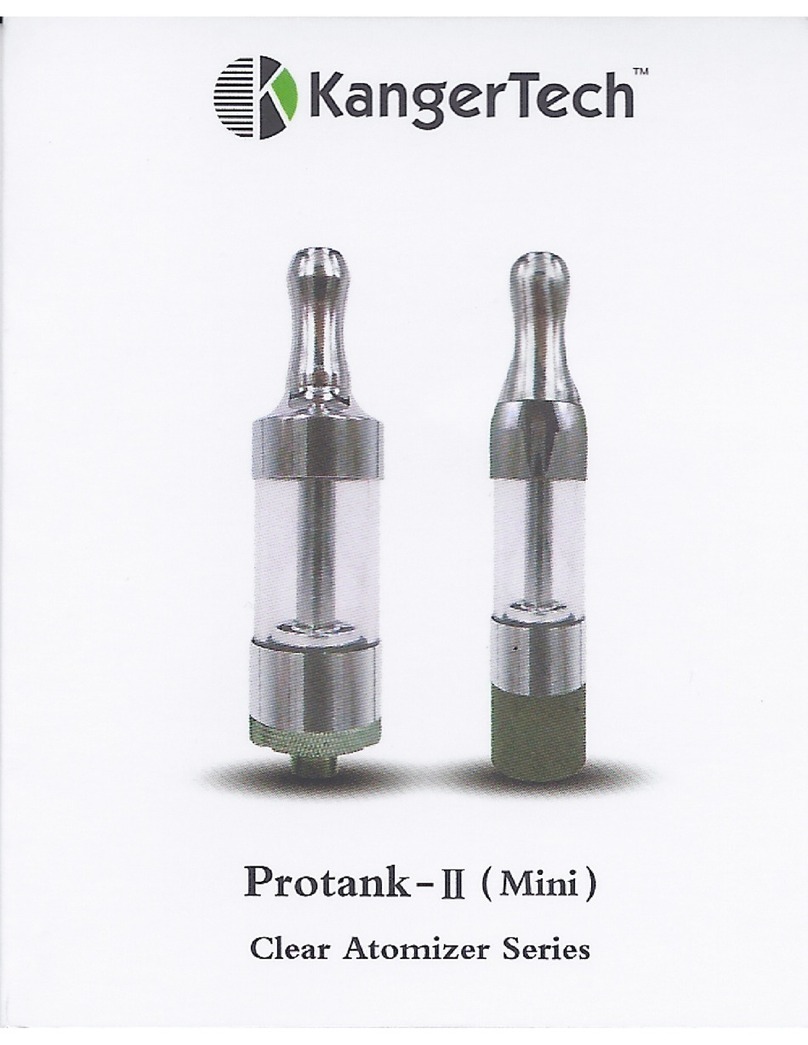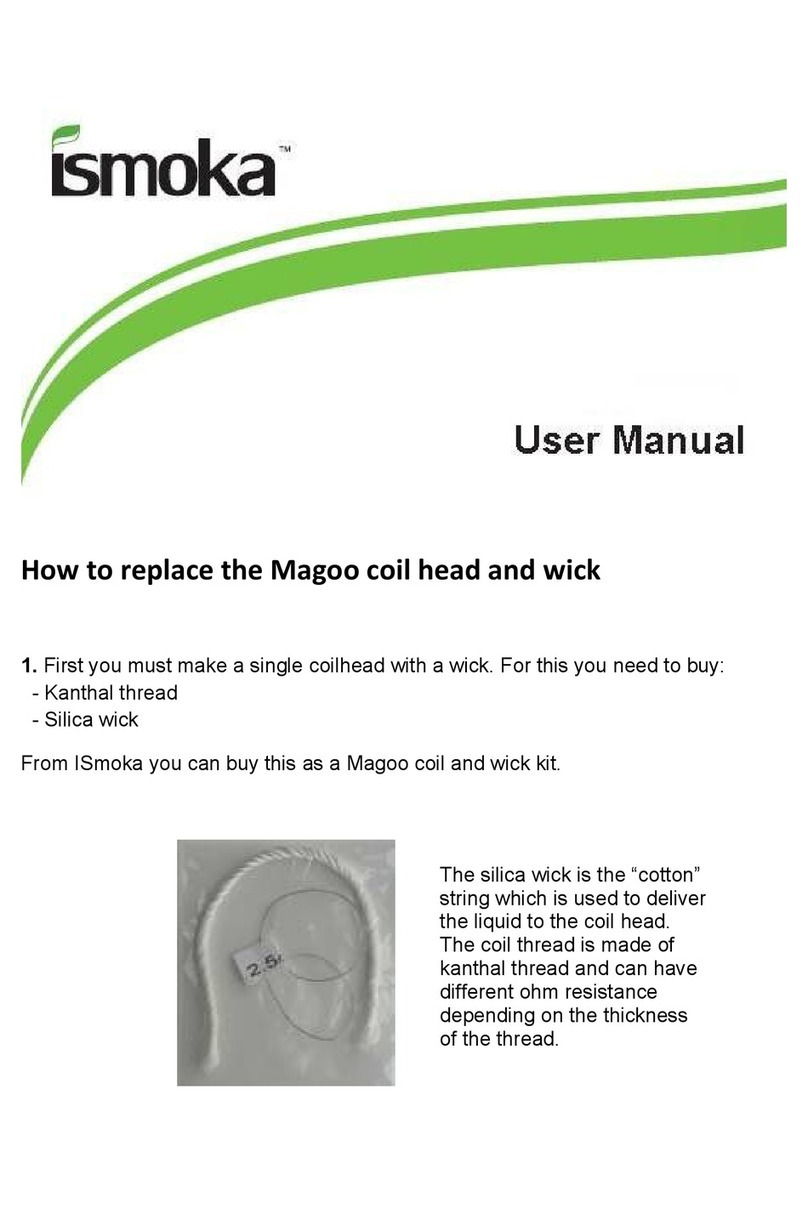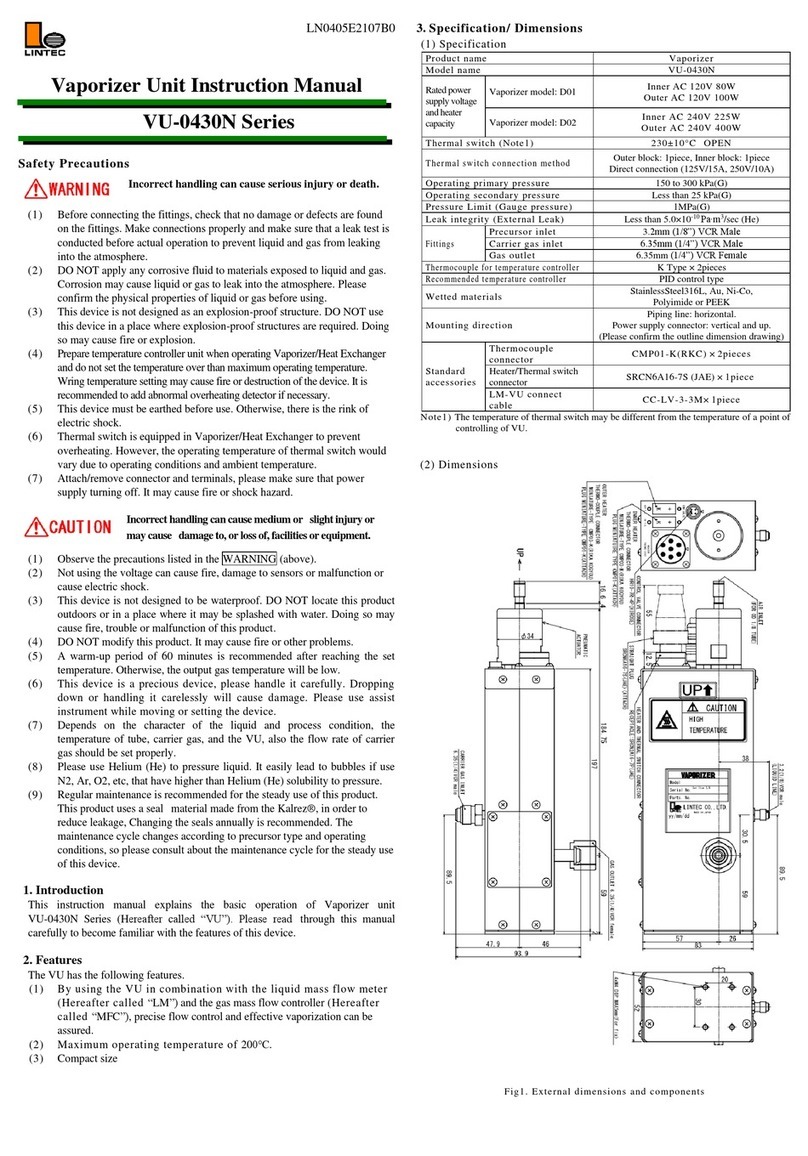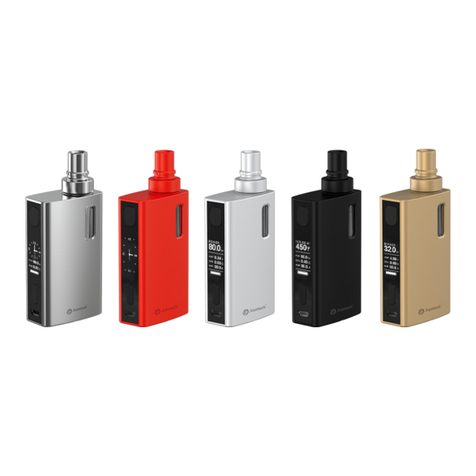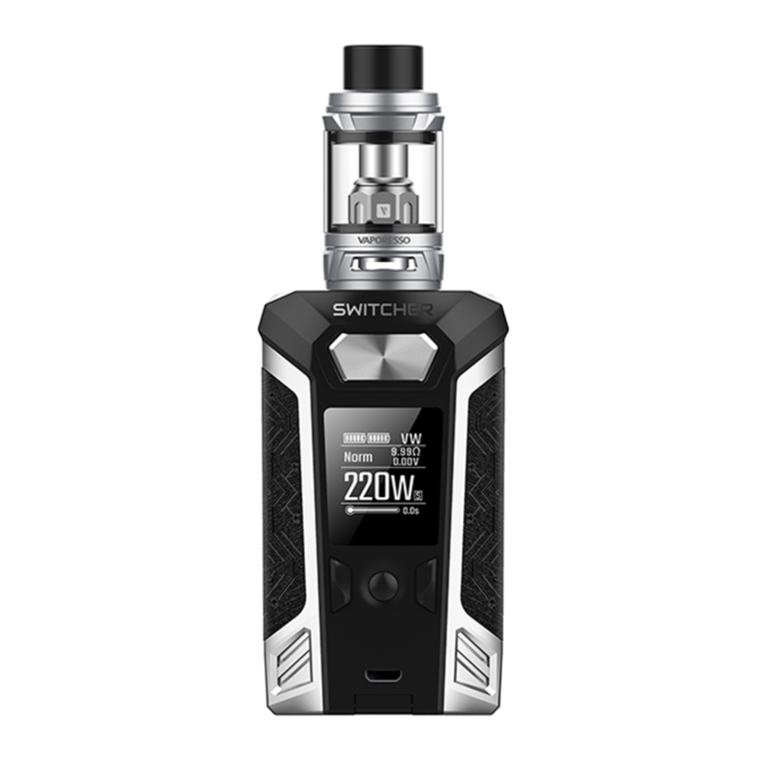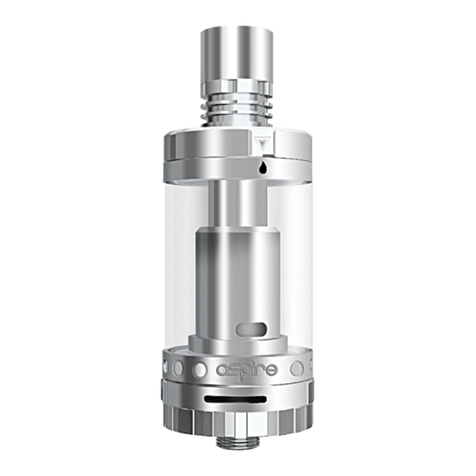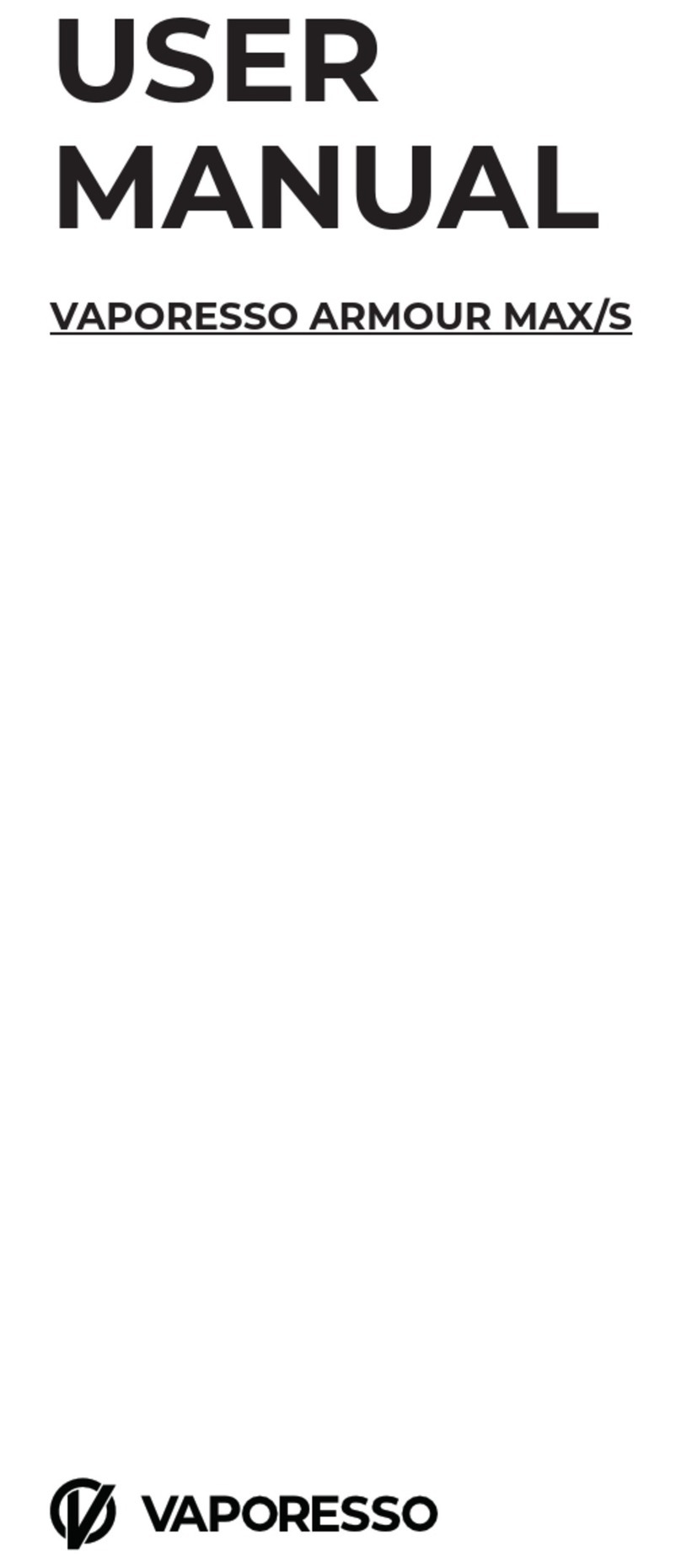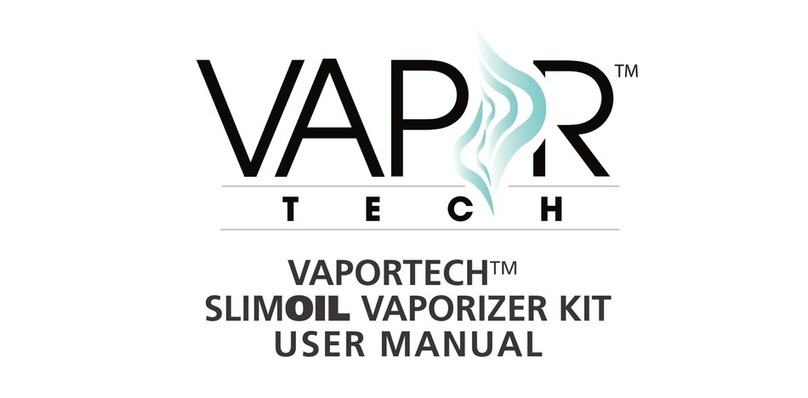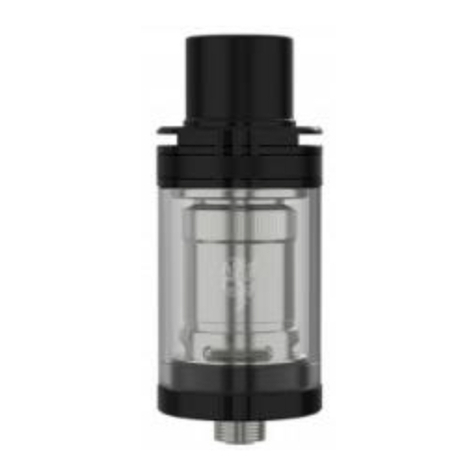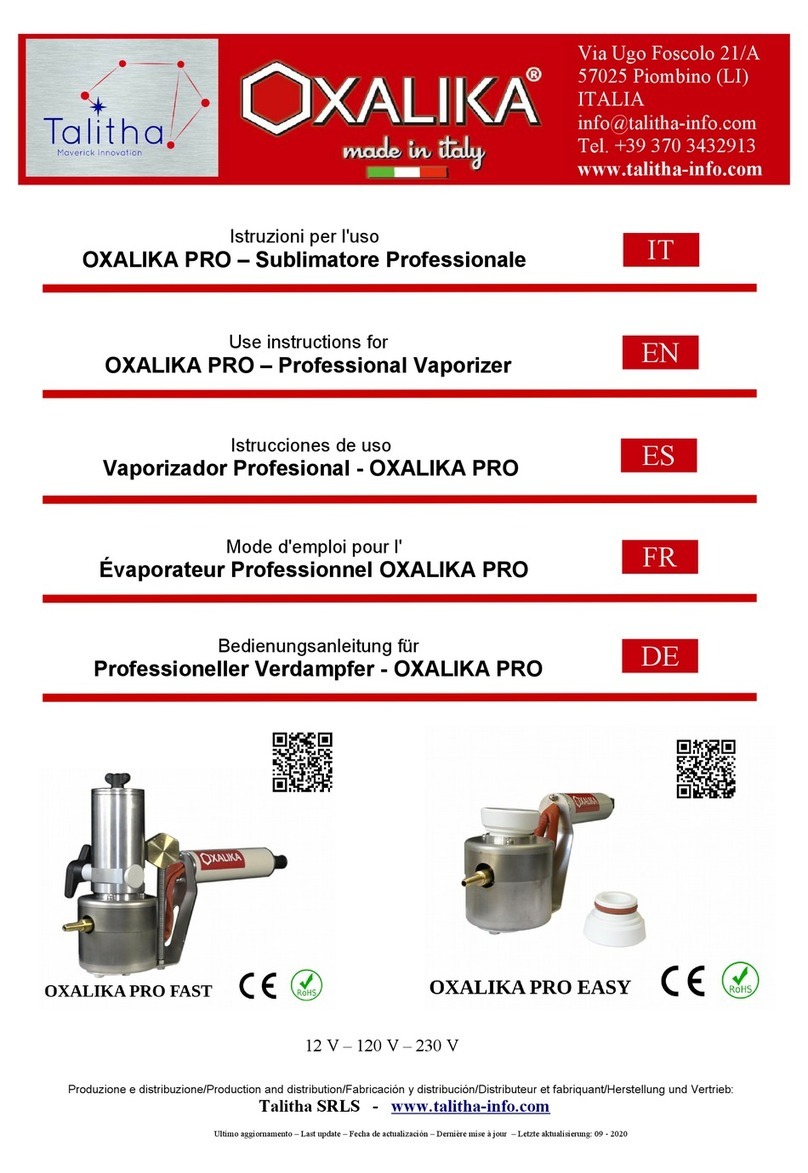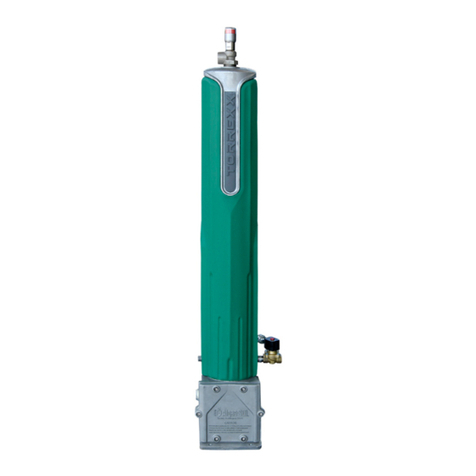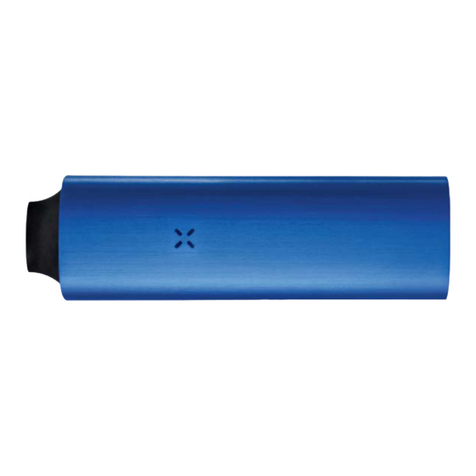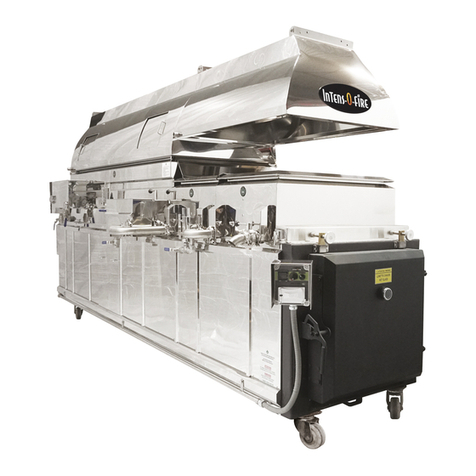Smoking Leo SLIMTWIST Series User manual

SLIMTWIST SERIES VAPE PEN
USER MANUAL
PARAMETERS
Size : 3.5” x 0.5” Ø
Battery Type & Capacity :
SLIMTWIST PEN - 400mAh Lithium Ion
Battery
ACCESSORIES
•USB Charger
OPERATION
5 BUTTON CLICKS
will turn on the battery while five clicks again will turn off. Make sure to turn off the product while not in use or placing it
into an enclosed space such as your pocket or bag.
2 BUTTON CLICKS
will preheat the coil and the contents of the cartridge. It is especially important to preheat the coil on cold days. Simply
let this cycle roll to the end (indicated by color cycling) or press the button to begin vaporization
1 BUTTON HOLD
will engage power and vaporize the cartridge contents during consumption.
TWIST KNOB
at the bottom of the PEN
allows for variable voltage from 2.0 Volts to 4.0 Volts. We highly recommend to keep the twist setting
at medium heat levels to prolong the battery life and reduce the heat used to vaporize the contents of the cartridge
PROTECTION
Low Voltage Protection:
Device will be powered off directly if the battery voltage is less than 3.3v
Automatic Power-Off Protection:
Device will be powered off automatically if no action has been taken with the device for 3 minutes.
CHARGING
Make sure the device is powered off before plugging the device into charge. Once plugged in, the LED indicator will turn RED to indicate that
the battery is charging. When you receive the product, make sure to fully charge the battery before use. LED indicator is blinking RED means
the unit will need a recharge soon.
Designed in NYC

SLIMTWIST SERIES VAPE PEN
USER MANUAL
CAUTIONARY NOTE
If battery is fully discharged the voltage will drop below where it can be recharged and the LED will flash but the PEN will
no longer work. Please especially note that the LED will flash and auto power off if you hold the button to draw current
for longer than 8 seconds, this is to prevent overheat!
Fully discharging your battery may harm it until it eventually appears to be dead (once it reaches a point below 2.5v it
will no longer charge with our chargers)! It is much better to do a partial discharge as this reduces stress and prolongs
battery life. Please remember that elevated temperature and high currents affect battery life cycle. Also, Lithium-ion
batteries suffer from stress when exposed to heat, as does keeping a cell at a high charge voltage.
We highly encourage
you to take care of your batteries.
HOW TO CARE FOR YOUR BATTERY
Did you know that compared to a FULL discharge, a partial discharge reduces stress and prolongs battery life? Our
batteries are Lithium-Ion rechargeable batteries, and normal care for Li-Ion devices applies to our batteries as well. As
an overview: elevated temperature and high currents affect cycle life, and Lithium-ion suffers from stress when exposed
to heat or keeping a cell at a high charge voltage. In short all of these things affect how quickly stress breaks down
(oxidizes) the internal cell structure of the battery. Therefore, avoid completely discharging lithium-ion batteries!
If a lithium-ion battery is discharged below 2.5 volts per cell, a safety circuit built into the battery opens and the battery
appears to be dead to the end user. In some cases the original charger may also now be of no use, as only battery
analyzers with the boost function have a chance of recharging the battery. However in most cases your battery will be
somewhere between 2.55 and 2.65 volts, so simply leave the battery on the charger for over a day to reset the reference
voltage level and fully charge (including final slowest/trickle charge) and your battery may resume normal operations.
Also, for safety reasons; do not recharge deeply discharged lithium-ion batteries if they have been stored in that
condition for several months. For extended storage, discharge a lithium-ion battery to about 40 percent and then TURN
the battery OFF (five clicks with our batteries) and store it in a cool place. Storing the battery fully charged means
oxidation of lithium-ion is at its highest rate.
Keep your batteries at room temperature if possible.
That means between 68°F(20°C) and 77°F(25°C). The worst thing that
can happen to a lithium-ion battery is to be fully charged and then be subjected to elevated temperatures. This is
because heat is by far the largest factor when it comes to reducing lithium-ion battery life. So don't leave or charge
your mobile device's battery in your car when it's hot out. Also be aware that fully discharging a battery in a short period
of time (the vape cloud phenomena is a good example of this) and then expecting to quickly charge it also affects the
lithium-ion internal cell structure.
Allow partial discharges and avoid full ones (usually).
Lithium-ion batteries are not like NiCd (Nickel-Cadmium)
batteries, in that they do not get a charge "memory." This means deep-discharge cycles (fully discharging then
recharging) are not required. It's far better for the battery's health to use partial-discharge cycles, and not fully
discharge or fully charge the battery in one go, as this creates heat and increases the rate of micro-fractures in the cell
structure.
Some resources will tell you to fully discharge occasionally to 'set the battery meter' on digital devices like Phones,
however be aware that this is ONLY setting a reference level FOR that metering circuit/function. Also, continuous partial
discharges create a condition called digital memory in the METER circuit itself (not in the battery as in NiCd), decreasing
the accuracy of the device's power gauge. So by letting the battery discharge to the cut-off point and then recharge the
power gauge WILL be recalibrated. However fully discharging a battery still has an effect on the Lithium-Ion cell
structure, so balance the need for 'proper metering' with long term lifespan.
Table of contents
Other Smoking Leo Vaporizer manuals


